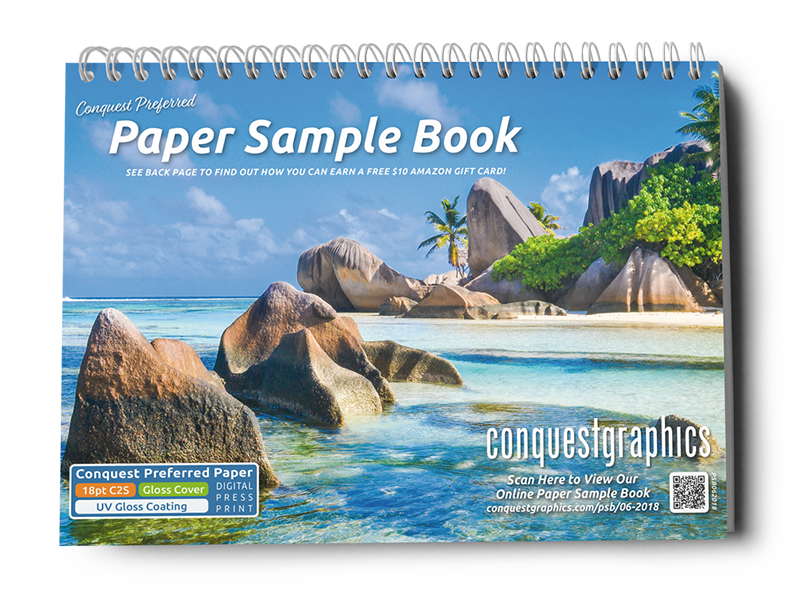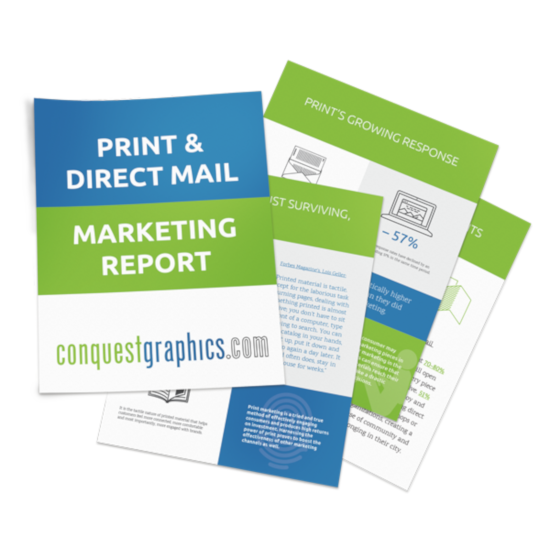
The art of creating an effective and efficient catalog is one that should not be underestimated. If you’ve ever taken part in the planning, design or production of a catalog for your business or organization, you probably understand and appreciate that statement.
Catalogs take long hours of drafting, designing, deliberating and refining to reach a form that’s anywhere close to a finalized draft. The immense amount of time and energy is only part of the total investment it takes to execute a quality catalog campaign, but the rewards that can come from it make it more than worth the cost.
To simplify the things we’ve learned about catalogs into a shorter form that can actually be useful to the general marketer or anyone involved with executing a catalog marketing campaign, we’ve broken down the core principles of quality catalog campaigns into the following 9 best practices when it comes to catalog marketing. Please keep in mind that each business is unique and the profiles and needs of their customers are not the same, which means the process of creating catalogs will vary significantly from business to business. That said, there are still a few central principles of marketing that are shared across all businesses that are successfully implementing catalog campaigns.
1. Take the time to refine your design
 Some of the biggest mistakes people make when developing their catalog campaigns are related to design or user experience. Whether a catalog is difficult or impractical to read for its intended purpose or a catalog is quite simply unattractive or bland, there are a seemingly never-ending number of ways a catalog can be badly designed.
Some of the biggest mistakes people make when developing their catalog campaigns are related to design or user experience. Whether a catalog is difficult or impractical to read for its intended purpose or a catalog is quite simply unattractive or bland, there are a seemingly never-ending number of ways a catalog can be badly designed.
A badly designed catalog is an absolute waste of money and time, as it will come across as if your brand didn’t try, or as if your brand can deliver high quality goods or services to the customers you decide to share it with.
Not to mention, spending your hard-earned money on a poorly designed catalog can also leave you with a negative ROI and can even sometimes lead to customers intentionally avoiding your brand because they didn’t like what they saw in your catalog’s design.
The key to avoiding these things is to hire a high-quality graphic designer with specified experience in print design. Making sure your designer has previous experience in designing for print is essential. Experience designing for print doesn’t just mean designing something that was printed on a desktop or sent off to another commercial vendor who may have corrected and converted the art files for them.
A designer who has experience designing for print means that they’ve gotten a good amount of experience creating printable files that are all the correctly formatted and prepared so the proof you receive will match the copy you have been provided with by your designer. While many designers may claim to have experience in graphic design for printed media, they may be misunderstanding the question and assuming you meant just generally printing out designs for smaller clients or similar small-scale print jobs that aren’t even ordered from a full-scale commercial printer.
Designing for commercial print is hard, and it takes someone who has a good deal of time and experience under their belt. Experience usually translates to a better understanding of the commercial printing process, and this in turn will accelerate your design and printing process as fewer mistakes and snags are likely to occur so the process can go smoothly.
A smoother process from design to printing is the key to saving big on various service or inconvenience fees that can come up in the print design and production process.
2. Brand with honesty and intent
One of the keys to coming across as an authentic brand is to always be as open and honest in your communications with customers and prospects as possible.
One of the keys to keeping communications as clear and direct as possible is maintaining a solid brand identity. This will not only represent you well in the public eye as they come across their brand, but it will also help to provide the people who make up your brand with a sense of team identity, as they are contributing to the greater culture that is expressed across your various media platform.
 To reap the benefits of a solid brand, a business or organization must have a unified and firm understanding of what their brand is all about. Whether it’s serving the customer, practicing a certain skill or occupation, or having a positive impact on the communities around you, having a unified and purposeful mission can be key to developing your honest brand identity.
To reap the benefits of a solid brand, a business or organization must have a unified and firm understanding of what their brand is all about. Whether it’s serving the customer, practicing a certain skill or occupation, or having a positive impact on the communities around you, having a unified and purposeful mission can be key to developing your honest brand identity.
While there isn’t really any single tangible thing that can be pointed to as being the source of a great brand and identity, there are some common principles among the world’s most trusted brands that can be used as guidelines for building trusted brands. Entrepreneur Magazine cites 10 qualities as being the most important for building tremendous, trusted brands:
- They provide highly personalized experiences for customers to keep customer satisfied
- They focus on happiness and positivity, while retaining a longevity and respect for their heritage by remembering why their business started in the first place
- Trusted brands deliver on their promises and accomplish what they set out to do
- They create a sense of creative collaboration with customers that can otherwise be a sort of “cool factor”
- They provide a warm, human experience for customers through carefully designed experiences from store layout to customer service
- Trusted brands are consistent and stable, and they do a good job of repeating and reinforcing their unique and compelling value proposition
- They have a can-do attitude and are constantly proving their efforts toward improving the customer experience
- They provide resources or opportunities for their customers to forge new connections
- They are unique and articulate the things that make them different from others in their industry in quirky and interesting ways
- Good brands go above and beyond to provide incredible service for their customers
By remaining mindful of these 10 qualities, a brand can represent their efforts in an authentic and honest way that customers genuinely love to appreciate. Your organization or business will benefit immensely from keeping these things in mind as you go about developing your catalog marketing campaign.
3. Choose attractive, high-quality photographs that honestly depict your product
The most effective catalogs do a great job of helping the reader visualize what their life could be like if they were using your product or service. Therefore, it’s helpful to give your reader a taste of that through high-quality photos of your product or service being used in the real world.
No matter what, the photos should at least show your product or service in the authentic environment or scenarios for which it is intended.
 It can be tempting to resort to stock photography of generic products or scenarios that closely resemble your product or service, but customers can see right through that. For example, apps like Groupon and LivingSocial often depict generic representations of the local activities and products a consumer can find on their app.
It can be tempting to resort to stock photography of generic products or scenarios that closely resemble your product or service, but customers can see right through that. For example, apps like Groupon and LivingSocial often depict generic representations of the local activities and products a consumer can find on their app.
While these types of images do give customers a sense of the type of experience or product they’ll be getting if they order from a specific listing, the generic images don’t help them get a truly realistic sense of what they can expect to experience or take part in.
To provide for every customers desire to genuinely see something before buying it, a catalog absolutely must depict the products or services a customer can expect to receive when they choose to order from you.
While hiring a specialized photographer to take pictures of your products may seem expensive at first, choosing to go with the alternative of generic or obviously staged depictions of products like yours can end up costing you big time.
Making sure your photos go along with all the other graphics and the general branding of your catalog will help to ensure a cohesive catalog reading experience for your customers, while also serving to attract new customers to view your catalog through attractive and intriguing images.
While attractive images may be part of creating and maintaining a high-quality, respected brand, it represents a category of its own since honest, environmental images (or images that depict your product or service in a believable, realistic environment) are so essential to building and maintaining a quality brand through catalogs.
4. Provide an easy route to purchase for interested customers
Catalogs should make sure there is a very easy to follow route to place an order for a product listed in their catalog. If the path to purchase your product or service is unclear, it can end up frustrating the reader in a way that will only drive them further away from your brand.
For this purpose, it’s essential to know exactly how you want customers to place orders for your products or services before drafting your first edition of the catalog.
While a first edition can include just a rough concept of the process of ordering, it is important to make sure your finalized version leaves the customer without a doubt of how they can go about getting their hands on your product as soon as possible.
Whether it’s through business reply order forms, indications to order via a toll-free number or your business or organization’s address to invite customers in to make purchases, a catalog simply must have a clearly defined and explained route to for customers to begin following as they head down to the road toward placing an order.
5. If you’re mailing, be sure to groom your mailing list
Since direct mail can only be as good as your mailing list, it’s vital to fine-tune and revise your mailing list before mailing a catalog out to your customers.

When mailing a catalog to a marketing list that’s new to you, it’s important to procure a list from a reliable source. Whether your list’s source has de-duped or run the list against the National Change of Address (NCOA) database or not, you should always run these verifications and adjustments yourself.
If you are making a list yourself through data you’ve collected through qualifying phone calls or online form captures, you should still de-dupe and run your list against the NCOA database since data could have been accidentally duplicated or changed since whenever the list was compiled.
De-duping your list will help to make sure you don’t accidentally bombard any single person with multiple copies of your mailed catalog.
Running your list against the NCOA database basically checks the addresses and names in your marketing list against a massive database managed by the USPS that monitors who has changed addresses in the past six months and appropriately adjusts addresses so the pieces end up being mailed to the correct new addresses from customers who may have changed addresses recently.
Running your list against the NCOA database through the USPS (or through Conquest Graphics since we offer it as a lower cost add on for any mailed orders) is another vital step to ensuring your mailed pieces end up in the hands of the customers on your list.
6. Include valuable promotions that create a sense of exclusivity and urgency
While being sure to avoid language and visual elements that may be perceived as gimmicky or spammy, catalogs that include promotions or discounts tend to have ROIs that outperform their counterparts without promotional content.
When developing a promotion or set of promotions to include in your catalog, it is important to make sure it is prominently represented in your finalized product so customers won’t miss out on the opportunities presented by your business or organization.
Avoiding big, loud graphic elements that seemingly shout discounts in the readers’ faces is vital for sensibly and effectively incorporating discounts into your catalog.
Another simple textual change that can have a huge impact on the behavior of your readers is the addition of the phrase “limited-time offer.” This phrase indicates that a discount, deal special gift or buyer reward is only available if the recipient makes a purchase using the discount within a certain time.
This phrase is one of the most effective at creating a sense of urgency, but there are a nearly infinite number of other possible combinations of words and phrases that can serve to create a sense of urgency among your readers.
Special offers encourage customers who are on the fence about ordering your product to make the leap and commit to purchasing from you to obtain the benefits outlined in your limited-time offer.
By limiting the span of time an offer is available, you can encourage those who are immediately on the fence about purchasing your product to go ahead and make the purchase.
7. Meet customers where they are through cross-channel marketing
These days having just a print catalog or just a digital catalog isn’t enough. Customers often have to encounter content across multiple media formats before they make a purchase decision.
 The printed catalog might be the communication medium for how many of your customers encounter your products first, but the digital website is the preferred ordering mechanism.
The printed catalog might be the communication medium for how many of your customers encounter your products first, but the digital website is the preferred ordering mechanism.
This is because consumers don’t stick to any single media format for the rest of their lives; their patterns and habits are always changing. Therefore, it’s important for marketers to provide different version of their marketing materials for each of the possible media formats a prospect may encounter it in.
In the case of printed catalogs, providing a digital alternative for your audience would be the first logical extension into another media format that would make sense. The easiest option would be to simply use the exact same design as your printed catalog, only presented in one of two digital formats: either as a downloadable PDF or as an embedded, easy-to-navigate digital version that can be viewed in browser.
Since PDFs are now indexed by search engines, they can now show up as search results to which people can be directed when searching for text or images that are included in your digital catalog. This new feature has opened up so many possibilities for online catalogs, and this has changed the face of many commonly searched Google terms that were underserved by the pre-existing links to plain webpages.
Some online printers like Conquest Graphics offer digital catalogs as an add-on for their catalog product listed on their website. These embeddable or downloadable versions of the catalogs you order in print are automatically reformatted and optimized for you to add to any website or web app that your brand might wish.
There are also several other opportunities available for smaller businesses that may be ideal for managing their product and service listings online. For example, opening a web store on Amazon or eBay is one way smaller businesses can bring their products or services to a larger global market.
While these services do require small service fees, they’re a small price to pay compared to the total increase in sales they can offer, so it may be worth it to many small businesses to bring their catalogs onto some of the online marketplaces. Etsy and Sears both offer their own versions of online marketplaces, as well, and they cater to those buying and selling certain categories of products more than others.
8. Consider publishing smaller niche catalogs for segments of your audience
One of the fastest growing trends in catalog marketing is the targeting of niche audiences. This kind of marketing provides a highly personalized, almost account-based level of direct advertising that is almost unparalleled in the world of printed and non-digital media.
 The automations and efficiencies afforded by digital printing enables a completely novel range of capabilities in catalog printing such as variably customizing content inside to suit customer needs.
The automations and efficiencies afforded by digital printing enables a completely novel range of capabilities in catalog printing such as variably customizing content inside to suit customer needs.
In the same way Amazon selectively filters the product listings you see on their marketplace based on your perceived interests and shopping trends, software can help you selectively print different collections of products that are catered to specific customers who are recipients of your catalog marketing.
The key to niche marketing in catalogs is really to have a good understanding of your customers types and buyer behaviors. Knowing this allows you to know just what kinds of people your business or organization is serving, and knowing this opens up several opportunities for utilizing data that can expand your business’ reach.
Knowing which customers are ordering from you also allows you to know which customers aren’t ordering from you. This can enable you to identify niche markets that might be underserved or in need of your products or services.
If you can understand those niche markets a little more through research, it can become a very easy matter to publish short-run niche catalogs that reach those highly specific audiences in more impactful ways.
Niche catalogs are higher impact than general catalogs, and many modern brands that have returned to printed catalog marketing have switched to almost exclusively using niche catalog marketing tactics.
9. Take notes on how audiences interact with your catalog, and learn from them
 Catalogs present one of printed media’s easiest opportunities to measure the interaction rates of your recipients. By providing key identifiers like customized promotional codes or links (often displayed as unique QR codes), the response rates of prospects that received catalog marketing contents can be easily monitored.
Catalogs present one of printed media’s easiest opportunities to measure the interaction rates of your recipients. By providing key identifiers like customized promotional codes or links (often displayed as unique QR codes), the response rates of prospects that received catalog marketing contents can be easily monitored.
The typical ordering methods used for printed catalog marketing campaigns include easily trackable conversions like telephone, mail and online orders. The rates in which these stats change after you’ve introduced a new catalog marketing campaign is a good estimation of how much of an impact your catalog marketing campaign has had on your bottom line.
While not fully automated, these methods of monitoring customer and prospect response rates to catalog marketing campaigns are highly accurate and provide actionable insight into you catalog marketing campaigns that can inform the decisions you make while planning, designing and implementing your future ones.
For more information on how you can monitor and measure the health of your catalog marketing campaigns to make your future catalogs even more successful, check out our blog on how to make a catalog that gets results.
Learning from the strengths and shortcomings of your past catalog marketing attempts is one of the most essential parts of the whole catalog marketing experience, and it’s one of the most important of our recommended best practices for you to consider when printing your next catalog marketing campaign.









